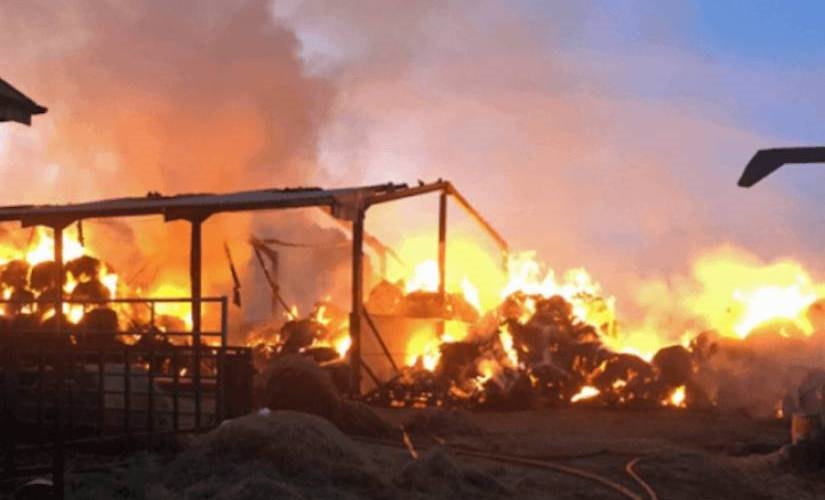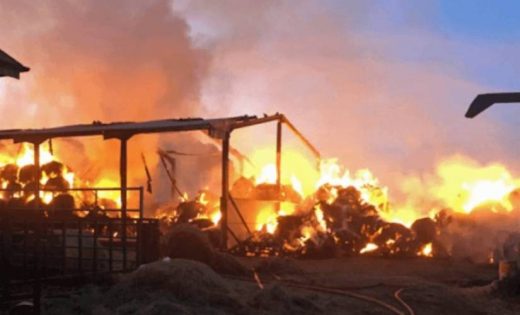What Wildfires Taught Me About Data Ops
What Wildfires Taught Me About Data Ops

As my family evacuated in the face of the monster fires raging around us in the hills above Silicon Valley last year — part of my mind was on work. I couldn’t help thinking as a newly minted CEO of a data ops fintech; this brings new meaning to the well-worn complaint of “constantly putting out fires.”
What Wildfires Taught Me About Data Ops
In truth, maybe more of us should be learning lessons from what we’re watching in the ecosystem around us. We do need new models. And we need perspectives to adapt to the fast-changing and unstable market conditions we’ve seen recently. We will undoubtedly see more destabilization in the markets in the near future.
Up in smoke
Consuming four million acres in California alone, the fires offer serious management lessons. Those lessons can be applied in the never-ending debate between executives who argue in favor of advance planning versus those who advocate for more flexible business models.
Common sense holds that businesses should plan for events and then act.
Your business shouldn’t wait for an emergency to happen and then react. Firms and individuals make financial plans and projections that look years into the future, for example.
They want a sense of security, so they don’t need to react to scarcity down the road. In this sense, planning is also synonymous with determination and perseverance. It’s part of a work ethic. It’s the responsible thing to do.
Data operations
You might say that monster fires fly in the face of planning, that nobody can predict them. A few years ago, that might have been true. But with modern data ops today, it’s clear that the complex ecological system is on edge.
The issues
We have drier forests. There are more developed residential areas. There seems to be more lightning somehow. We see fewer resources for prevention. There are sustained real estate losses. These are early signs of climate change that are not going away.
Ask some questions
Will we be at the mercy of these raging weather beasts? We can’t wait for another climate shift. Can we become more effective in forestry management strategy? Can we ultimately predict where and when a fire may happen?
What do Fires Have to do With Business?
As in the case of fire prevention, businesses should be expecting more crises. There will be more market disruptions. Let’s say there will be more metaphorical wildfires in the coming years.
We can’t be sure whether we will be in the path of the blaze until we can’t avoid it when it comes. The question is whether one approaches those fires in the same manner, we do today, or should we start looking now and find a better way? What will break us out of our complacency — or how can we predict the destructive cycles that appear to have a grip on us?
It starts with planning.
Plan for what?
Scientists have been predicting an increase in the instances of megafires for years.
Analogously, entrepreneurs must be current on the research and technology that should give them deep insights about former, current, and future trends. But never forget that the scientists underestimated the scale of the potential fire destruction in the West.
Hollywood produces films like Sharknado, but I can’t remember seeing anything that included pyrocumulus clouds that trigger lightning storms and fire tornados.
Science and technology can offer solutions, as well as data ops.
Fire experts discuss how fires should be allowed to burn because putting them out too early preserves the underbrush, giving rise to more intense conflagrations later. Others say that officials should clear sections of the forest to prevent fires from growing out of control.
But it turns out that whether to let fires burn, clear underbrush, cut down trees, or engage in other forest management depends on the trees and landscape within the forest.
Data
Data ops are key.
The more data one has about an ecosystem – or business – the better and more tailored one can make a plan that addresses the ecosystem’s current and future needs. The lesson is that data is central to all decisions, especially in a world where artificial intelligence is poised to take over more processes.
That said, research shows that forest manager models are often effective no more than 15 years out, a much shorter horizon than one might assume. When discussing trees that can live for centuries. Data only goes so far, and that’s where the operations part comes in.
Distinguish between the essential costs that can mitigate challenges now while also identifying and targeting measures to address.
Your essential costs now must take care of long-term issues that might be the source of the present moment’s challenge. For example, investors in the West are facing serious questions about funding properties that might withstand future fires.
A fireproof or more resilient home, office, or strip mall doesn’t address the climate changes that are creating the fires in the first place, however.
You need effective operations to organize and understand what the data suggests is actionable.
The downside of planning
Planning has its limits, however. Complex systems can have increasingly visible components. In recent years, the Western U.S. wildfires of today are only one of several cause and effect issues. There is a web of causes and effects, such as the financial crisis in 2008 and the experience of COVID-19.
These should convince everyone that the cause-and-effect reasoning that humans have developed to make sense of the crazy world has its limitations. That doesn’t mean planning is futile. It means planning needs to be put in perspective.
Businesses need to become more accustomed to the uncertainty of not knowing which stream in which complex system might wind up adversely affecting them.
At the same time, they need to develop plans that are management tools, roadmaps for investors and mandatory for owners. There is a difference between responsible planning that will prepare a venture for the unknown and wasting time.
The goal is not to prognosticate but be ready to adapt, identify potential risks with rapid out-of-the-box risk assessment, take control, and stay ahead.
Emergent strategy
Businesses will need to identify and demonstrate the courage to undertake risk in this chaotic environment. We must turn from what Henry Mintzberg called “deliberate strategy” in his 1994 landmark “The Rise and Fall of Strategic Planning” to “emergent strategy.”
Emergent strategy is leaning into the tactics that work to achieve the business’s goals now rather than depending on a plan that doesn’t necessarily reflect current disrupted conditions.
Risk-averse companies might continue to operate according to a chain-of-command model that sifts through data and sends top-down orders based on preexisting plans. They won’t do so well as the challenges mount and upend markets.
Companies that operate more like networks, sending data and tools to their frontlines, will make more intelligent decisions and hopefully thrive.
Conclusion
Like phoenixes, forests regrow out of the ashes left after fires. Companies burned during unexpected crises can do the same with some planning and a willingness to adapt.
I’ve watched the communities around me react, adjust and take on new planning and resiliency efforts. There is a way forward.
The post What Wildfires Taught Me About Data Ops appeared first on ReadWrite.
(40)


